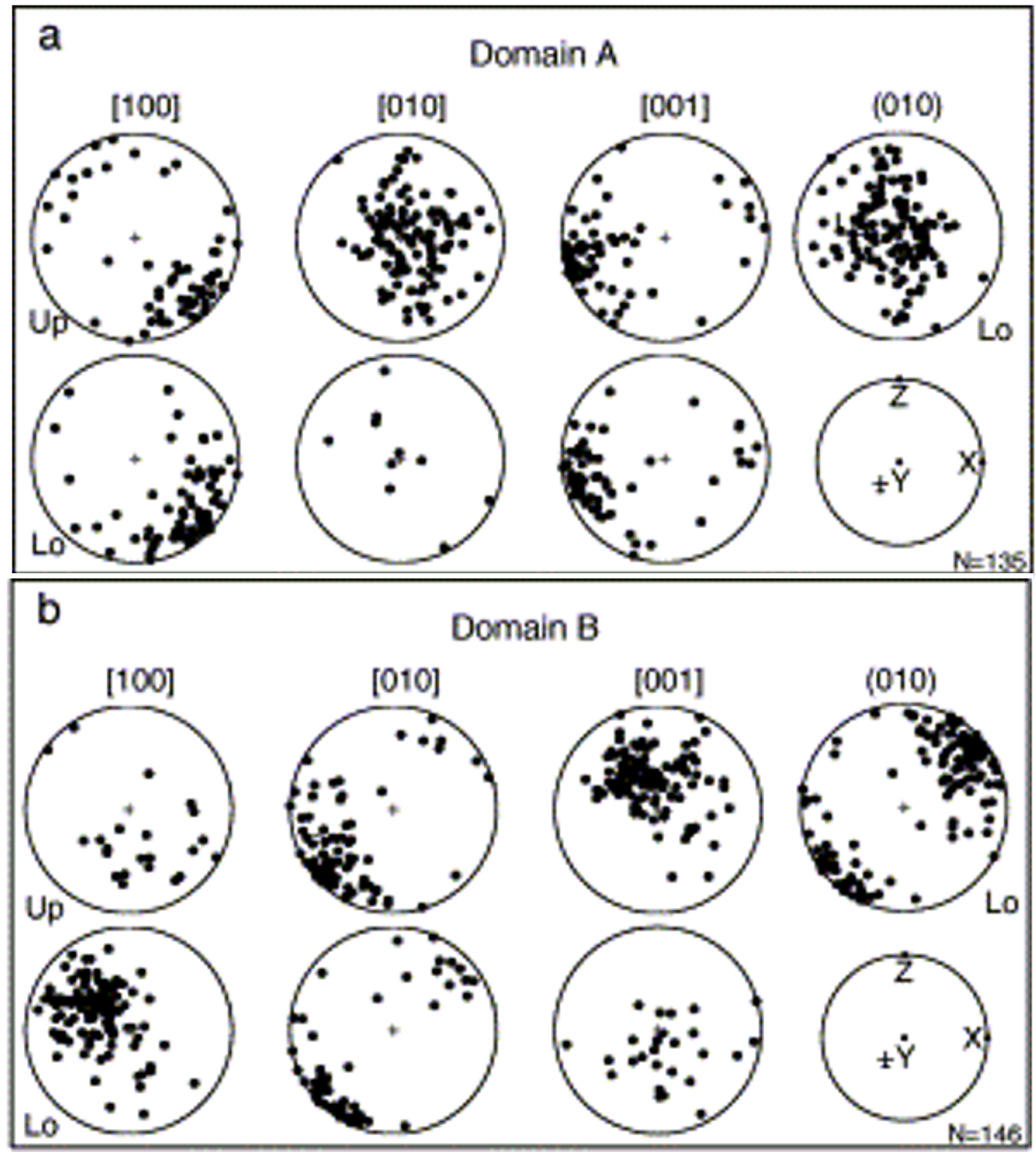
One technique I have developed is for analysing dislocation density: the "Weighted Burgers Vector" method (Wheeler et al. 2009). The left picture shows a map of distorted olivine, colour coded for misorientation relative to a reference point. The right picture shows subgrain walls colour coded for the direction of likely Burgers vectors using a technique I developed. Green indicates the [100] direction and red is [001], so such maps can assist in diagnosing active slip systems.Thanks to Jake Tielke for this dataset.
A commercial version of the algorithm was released by Oxford Instruments Nanoanalysis in 2022: see the OINA webinar and more information. My Matlab code can still be used for non-commercial research. I am happy to discuss the technique with any user, academic or commercial.




